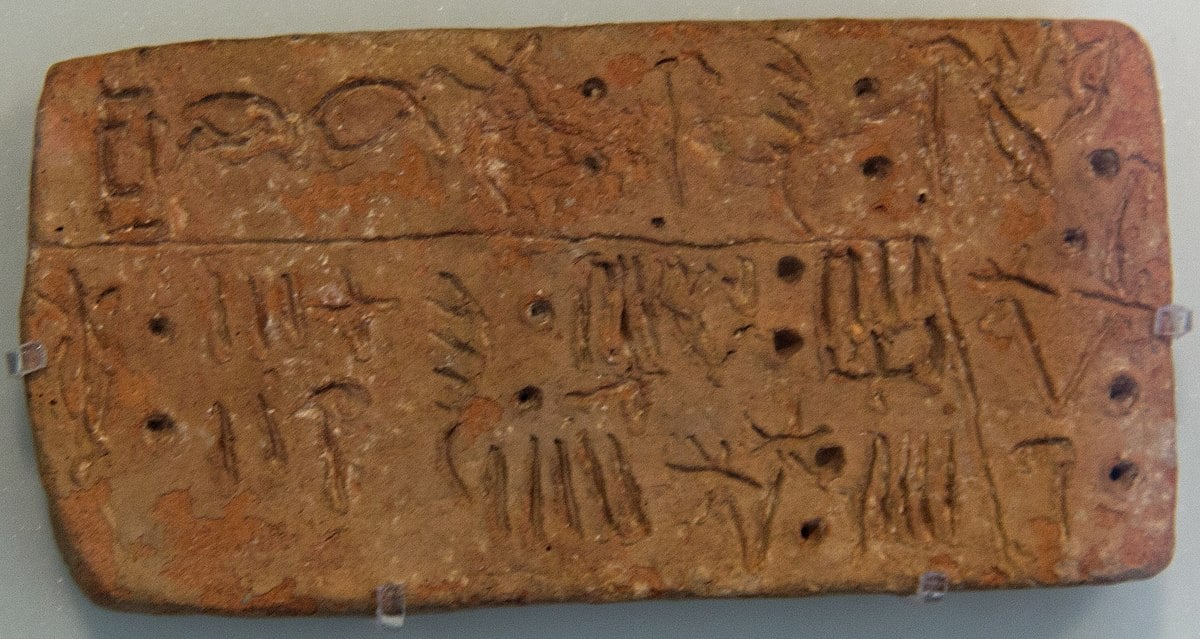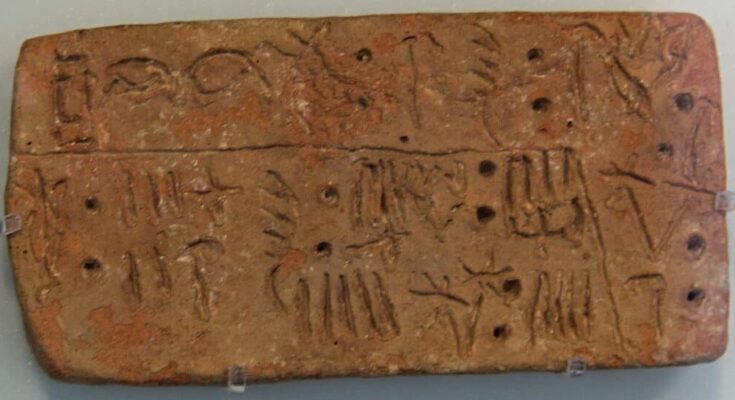
There are lots of things about the ancient Minoan civilization that scholars continue to debate. One of the mysteries surrounding this civilization is the script that they used, Linear A. While many things about this script are already well understood, scholars still debate when it came from, one idea being that Linear A came from Egyptian hieroglyphics. Does the evidence really support this theory?
What we know about Linear A
To begin our investigation, it is worth providing an overview of the basic facts about Linear A that we do definitely know. It first appeared around 1800 BC on Crete, the home of the Minoans. It fell out of use in c. 1450 BC when the Mycenaeans conquered Greece.
Significantly, Linear A was not the first writing system to develop on Crete. Predating it by several centuries was a writing system known as Cretan hieroglyphics. This first appeared in about 2000 BC and disappeared around 1700 BC.
We also know that the language which Linear A was used to write was not Greek, Egyptian, or any language related to those two. It was the language of the Minoans, which is still undeciphered but bears no obvious similarities to known languages.
Does the origin of Linear A lie with hieroglyphics?
Based on the information that we have, is there any basis for the idea that Linear A of the Minoans might have come from Egyptian hieroglyphics? The first important fact to consider is that Cretan hieroglyphics demonstrably came before Linear A.
This leads to the logical suggestion that the younger script may have evolved from the older script, as suggested by Sir Arthur Evans. Does the evidence really bear this out?
In part, the answer is yes. About 20 percent of the symbols in Linear A can be directly associated with symbols in Cretan hieroglyphics. This demonstrates that Linear A did come, at least partially, from that hieroglyphic script.
Of course, the evidence is clear that one did not slowly and naturally evolve into the other. The differences are stark and are there from the beginning of Linear A. It was evidently a conscious adaptation. Nonetheless, the point that Linear A is largely derived from Cretan hieroglyphics still stands.
The origin of Linear A in Egyptian hieroglyphics
With this fact in mind, what can we say about a possible connection between Linear A and Egyptian hieroglyphics? Was the latter the origin of Cretan hieroglyphics, thereby making them, by extension, the origin of Linear A?
As we saw before, Cretan hieroglyphics first appeared in c. 2000 BC. At this time, there were strong connections between the Minoan civilization and Egypt. This lends credence to the idea that the first script of the Minoans came from that country.
A comparison of the symbols used in both hieroglyphic scripts shows that one did not evolve into the other. Nonetheless, there is good reason to believe that Egyptian hieroglyphics were the direct inspiration for Cretan hieroglyphics, and thus partially responsible for Linear A.
Like Egyptian hieroglyphics, Cretan hieroglyphics uses symbols which are basically equal in size, regardless of the real size of the object being represented. Both scripts generally do not have the symbols touch each other to create greater meaning. They also both have the symbols all face the same direction on any given line.
While it is clear that the Minoans created their own symbols, the similarities between both writing systems are strong enough to suggest that the Minoans did take direct inspiration from the Egyptians.
Hence, although Linear A did not directly evolve from Egyptian hieroglyphics, its origin can likely be traced back to them.



